Join More Than 50,000+ Subscribers and get latest camera news and rumors
NEW CAMERA VIDEOS ON YOUTUBE
|
By admin, on March 24th, 2025

So finally, we got confirmation from the general manager of Fuji Film Professional Imaging Group that the Fuji X-Pro 4 is under development. In a recent interview with PetaPixel, he clearly stated that.
He noted that a simple upgrade with the latest processor or just a 40-megapixel sensor would be boring, indicating a major shift or upgrade in the upcoming X-Pro series camera.
Previous reports suggest that the upcoming X-Pro series camera will be called X-Pro 6 since Fuji will sync the name of the X-Pro series camera with others in 2026. It has been almost six years since the Fuji X-Pro 3 was released. The camera was announced in October 2019, and now it feels too old. Fuji has taken too much time, considering that even flagship cameras from other brands receive regular updates every four to five years. However, we have been waiting for more than six years now.
The Fuji X-Pro 3 had very low sales, and many owners of Fuji’s X-Pro 2 cameras decided not to upgrade their gear due to its unusual display setup. The Hidden flipping screen design of the X-Pro 3 failed to impress professional photographers. Due to the low sales of the series, Fuji decided to halt the research, development, and announcement of the next X-Pro camera for a while. And at one point of time, Fuji also realized that introducing a Hidden tilting display—which was practically useless—was a mistake. That so-called innovative design failed to impress professional photographers, ultimately leading to the X-Pro 3’s poor sales performance.

We have seen how Fuji handled the X100 series in its recent update. Not only did they add a 40-megapixel high-resolution sensor to that compact body, but they also introduced a 6-stop sensor-shift IBIS mechanism, making the Fuji X100VI one of the best street photography cameras ever created.
And that’s not all—the camera also includes a built-in 4-stop ND filter paired with a fast lens. What more could one ask for in a camera like this?
Similarly, Fuji is now focusing all its attention on developing the next version of the X-Pro series. Let’s hope that this time, we see a massive upgrade with significant changes. Stay tuned for more updates!
Follow us on our social pages FACEBOOK | TWITTER | INSTAGRAM, –> See More Fuji Rumors
By admin, on March 23rd, 2025
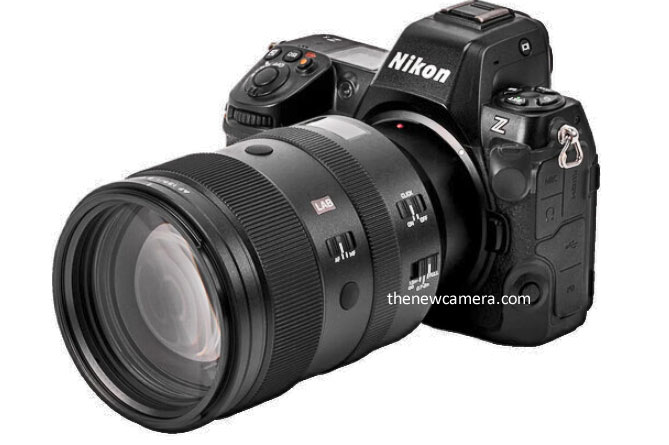
Although it was available for the Sony E-mount, Viltrox announced the 135 f/1.8 lens for the Nikon Z-mount. Now in Nikon, we can say it’s a budget-friendly version of Nikon’s 135mm f/1.8 S Plena lens. In the new lens, Viltrox uses a new Hyper VCM motor for autofocus, which it claims is 150% faster than the traditional STM motors used inside the lenses.
Get Viltrox 135mm F1.8 Lens for Nikon Z Mount | Sony E Mount
Like the E-mount version, even the Z-mount 135mm f/1.8 lens features a display screen on the top of the lens that can be customized to show the relevant information. Also, it features an autofocus to manual focus on-lens switch, as well as an aperture de-click switch. The lens also has a multifunction ring that enables multiple functions such as controlling the shutter speed or the aperture of the lens, or even the ISO. So, it’s a multipurpose ring control that can be customized from the camera. And finally, a USB-C port keeps your lens updated with the latest firmware update.
Below are the images and videos captured with the Viltrox AF 135mm F1.8 LAB Z Lens:
Photos: https://drive.google.com/drive/folders/1hlEn9SbZ7htmIa34NF6lmNUfOY5JyiFb
Videos: https://drive.google.com/drive/folders/11pIdQgXHn_CI2k4xZnTrdtmvWrRshpkE
Exif details are attached with the images
Explore LAB, PRO, and AIR Series at the B&H Store
Follow us on our social pages FACEBOOK | TWITTER | INSTAGRAM to get live Camera News +
Also see – Top 10 Best Cameras Under $500 in 2025 | Flickr Most Popular Cameras and Smartphones of 2024
Support us – Use or affiliate link Amazon.com | B&H Store for the next purchase u make – it helps us 🙂
By admin, on March 20th, 2025
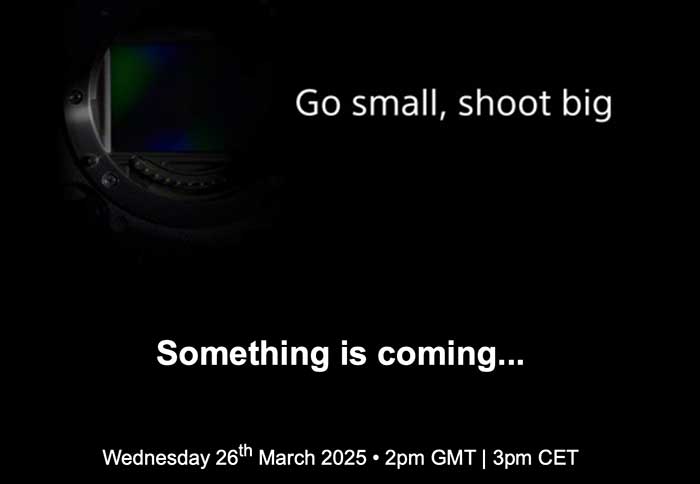
Sony just posted an teaser of their upcoming Fullframe cinema camera announcement, as per the leaked image its visible its scaled-down VENICE expansion module on March 26, 2025,
More over this – Sony itself accicxently leaked upcoming VENICE Extension System in a video which was removed later, the image you see below is The VENICE Extension System Mini (model CBK-3621XS) has a built-in 8.6K full-frame CMOS sensor that retains the image quality of VENICE 2
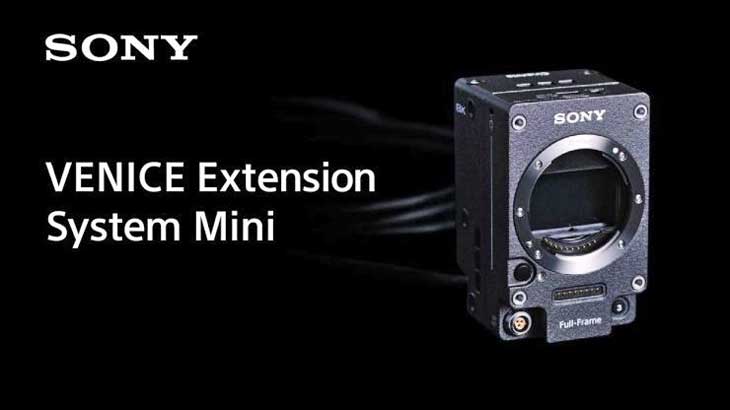 VENICE Extension System Mini Approximately 70% smaller than the VENICE Extension System 2 (image block volume ratio). Flexibility is built into every corner of the compact design. A slim, soft, detachable cable brings greater freedom to filmmaking, while also opening up XR content creation and stitching shooting. The PL mount adapter supports more lens selection and metadata recording. Assignable buttons and numerous mounting holes allow photographers to mount and shoot to their preferences. This compact system is ideal for handheld, gimbal, and POV shooting.
Follow us on our social pages FACEBOOK | TWITTER | INSTAGRAM, If you have time –>see more Sony Alpha Rumor
By admin, on March 18th, 2025

Let’s talk about the Nikon ZV camera. It’s a rumored camera that features the goodness of all the video core specs that we have already seen in the Nikon Z6 Mark 3, but it’s actually an extension of Nikon’s new videography cinema mirrorless line.
Nikon ZV / Z6V Rumor
As per the recent set of rumors we have from the rumor mill, Nikon is currently working on a video-oriented Z6 Mark 3 camera, which uses the same 24.5-megapixel sensor as now, and it has a body that looks very, very similar to the Sony FX3 camera. You can relate to that, or you can also relate to the Nikon Z30, which does not have an electronic viewfinder inside it. So, you can just imagine a full-frame variant of the Nikon Z30 using the Z6 III sensor.
Possible Naming and Branding
The name of the camera is actually not known yet, but we are calling it Nikon ZV. It may also be called Nikon Z6V at the time of announcement. The rumor mill is suggesting that Nikon may start its video-focused branding with the ZV name.
Nikon Z6 III Key Features
The Nikon Z6 III camera was launched in 2024, and the camera features a 24.5-megapixel stacked sensor, which offers approximately 3.5x faster readout speed compared to its predecessor. Due to that, and with the pairing of the Expeed 7 image processor, the camera is able to capture 6K 60 FPS RAW videos, and it can save internally at the same time. You can also record 4K 120 FPS with slight crop and Full HD videos per second, making it a perfect choice. At the same time, the upcoming ZV camera will have all the possible set of core specifications that we have already witnessed in this camera by extending it further.
Nikon ZV / Z6V Specification (Expected)
Core Imaging and Processing
- 24.5MP Partially-Stacked CMOS Sensor
- EXPEED 7 Image Processor
- Up to 20 fps Raw, 60 fps JPEG Shooting
- Blackout-Free, 5760k-Dot EVF
- 493-Point AF with AI-Based Subject Detection
Advanced Video Capabilities
- 6K 60p N-RAW, 6K 30p ProRes RAW
- 4K 120p, Full HD 240p Slow Motion Video
- Open Gate Recording
- 2x-anamorphic squeeze or custom aspect ratios.
- shutter angle control
- false color display,
- DCI-Spec Alignment
- Enhanced post-production stabilization, complementing 5-axis IBIS & electronic VR.
- Internal ND Filters
- Active Cooling System – Enables longer high-frame-rate video recording by preventing overheating.
Enhanced Audio and Connectivity
- 32-Bit Audio Support – Upgraded from 24-bit PCM, offering higher fidelity for post-production, plus line-in and XLR accessory compatibility.
- Multiple USB Ports & Improved Functionality – Two USB-C ports: one for data transfer, external recording, and power, and another for audio input
- Camera-to-Cloud Direct Connectivity – Seamless cloud integration for efficient workflow.
User Experience & Interface
- 3.2″ 4-Axis Tilting Touchscreen LCD
- Improved Video Interface
- CFexpress Type B & SD Memory Card Slots
Cinema & Professional Lens Compatibility
- Compatibility with Z Cine Lenses – Seamless integration with Nikon’s Z-mount cinema lenses.
Mounting Points for Accessories – Ergonomic design for video rigs and additional time code, time-lapse, and dual-format recording support.
Nikon’s Acquisition of RED and Its Impact
Nikon’s acquisition of RED was done in 2024. Now, we also have Nikon Z-mount-based RED cinema cameras—the RED Raptor and the RED Komodo. Nikon engineers are now working in power with the RED team to ensure the future of RED cameras, as well as integrating the best cinematography features possible for the new-age mirrorless camera, which is directly coming from the RED core development program.
RED Technology Integration in Nikon ZV
So, the upcoming camera will have some RED tech inside, possible enhancements from RED could include:
- Deeper integration of RED’s color science for nuanced color reproduction.
- Support for professional formats like Redcode RAW.
- Enhanced connectivity, such as XLR inputs and SDI outputs.
- Robust build quality for harsh shooting conditions.
- Improved thermal management for extended recording.
These enhancements aim to align the camera with RED’s cinema-grade capabilities
Expected Release Timeline
The camera is expected to arrive sometime in Q3 or Q4 of 2025, and if we get any updates related to the same, we will be posting them here at TheNewCamera.com.
Latest Post
📢 Article “Nikon ZV Latest Rumors, Specifications and Arrival Date” Published on: March 18, 2025
📝 By: The New Camera Editorial Team Follow us on our social pages FACEBOOK | TWITTER | INSTAGRAM, to get get Camera News + Nikon Rumors 24X7
source nikonrumor.com
By admin, on March 18th, 2025
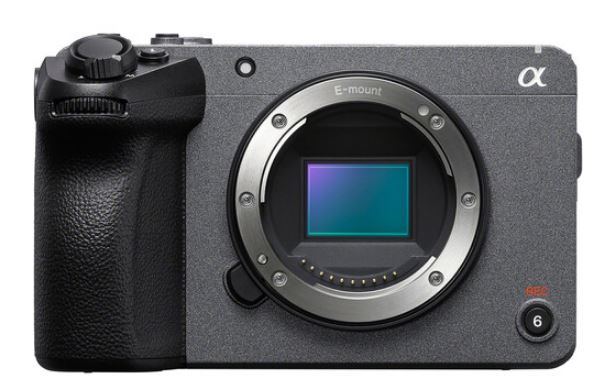
The Sony FX3 camera was announced back on February 23, 2021. It was a full-frame mirrorless consumer cinema camera. It was made to make cinema cameras within the reach of more and more professionals—those who love to have a compact body with all the possible features of a professional cinema camera. The FX3, at the time of the announcement, had a 12.1-megapixel CMOS sensor that was used in the Sony A7S Mark III camera and featured 4K Ultra HD video recording up to 120 frames per second and 10-bit 4:2:2 XAVC S-I internal recording.
Limitations of Sony FX3
But at the time of the announcement, the camera was lacking an internal RAW video recording mode, and of course, the FX9 also does. But with the FX3, we do have an option to get 16-bit RAW video by the HDMI port, but again, no option to record RAW internally.
The other option that was missing inside the FX3 is open-gate recording, which is now available in almost all Panasonic and Fuji cameras. Even cameras like the Panasonic S9, S5 II, Fuji X-S20, and Panasonic S1R Mark II now offer open-gate recording.
What Rumor Mills Are Saying This Time
A lot of rumors indicate potential upgrades to the sensor, including a global shutter sensor, which is coming from SAR.com
What We Know So Far about Sony FX3 II
New features are coming inside the FX3 Mark II camera, which will fill the gaps of the first version of this camera.
- The first feature that we are about to receive in the FX3 Mark II is an open-gate recording in a 3:2 format, which is almost confirmed. After a very long wait, Sony professional users will be getting open-gate recording in their upcoming professional camera.
- The other confirmed set of features includes 12-bit internal RAW internal video recording, which is about to arrive inside this camera. It’s really a kind of exciting moment to see these new features that we have never witnessed or seen in Sony’s professional consumer-grade cameras coming along with the FX3 Mark II announcement.
- The Next Cinema Camera from Sony is FX3 II, Arriving before Q3 of 2025.
Why Do Internal 12-bit RAW and Open Gate Actually Matter to Professionals?
A RAW video that a camera records is uncompressed or minimally compressed data, which is directly coming from the sensor without passing through different algorithms, providing the maximum latitude possible for color grading and other post-production adjustments. 12-bit video offers color depth, allowing users to have smooth gradients as well as better dynamic range handling compared to other lower bit-depth or compressed video codecs. So, having these capabilities internally means filmmakers can enjoy filmmaking and can get the maximum possible advantage of the sensor being used inside the camera, which other camera makers are also giving right now.
Another important aspect, professional content creators nowadays use open-gate recording to handle the content for multiple platforms simultaneously. These content creators need to adapt footage for various platforms recording at the same time, and by recording the full sensor, they can crop out aspect ratios required for post-production without losing the video quality of the camera.
It’s a Time for Upgrade
Sony’s higher-end cameras like the FX9 and FX6 do not support internal RAW recording and require an external recorder to capture 16-bit RAW via SDI output, and that’s the most frustrating thing for many professionals out there. That’s why, possibly, they are migrating to different brands such as Panasonic Lumix at this moment. So, the market pressure from the competitors for having internal RAW video recording as well as the open gate has led Sony to innovate these features in the FX3 Mark II (based on the information we have ). If they fail to innovate, they will not remain competitive with others, and that will be a big mess for the brand’s consumer base. Given the success of the FX3 and the growing market demand for hybrid cameras as well as advanced video features, this is the best time for Sony to release the FX3 Mark II camera with extended capabilities.
The article “Sony FX3 Mark II to Feature Open-Gate and 12-Bit Internal RAW” was first published on TheNewCamera.com by TheNewCamera Team. Follow us on our social pages FACEBOOK | TWITTER | INSTAGRAM, If you have time –>see more Sony Alpha Rumor
By admin, on March 17th, 2025

E88_8888 which is very good and accurate in bringing out the latest camera registration information from the wireless certification agency, posted a prediction for the EOS R1 Mark II, that it will use a Global shutter sensor.. the prediction looks logical to me, and that why I have decided to publish. As global shutters are now being used by Sony in their professional A9 III camera which is made for sports and wildlife shooters, and Canon has a history of sensor innovation. But, the current Canon R1, launched in 2024, lacks a true global shutter, suggesting this could be a natural upgrade.
By comparing the information before and after the interview, EOS R3 was originally a product of manufacturing dissatisfaction with EOS R1 and turning to test all new functions.
EOS R3 has been well received by the professional market, but it has defined the product style of EOS R1: professional control, balancing the triangle of resolution, high sensitivity, and readout speed.
I personally predict that Canon’s next flagship EOS R1 II will focus on its own semiconductors and develop a global shutter with stacked voltage memory.
This solution is mature and reliable, and in line with Canon’s tone.

Canon R1 Flasghip is slow in front of the Sony A9 III camera
Since Sony now has the Global shutter sensor in their fastest camera and as we all know Canon isn’t into the Megapixel race, the nearest true competitor of Canon’s fastest flagship Canon R1 camera with 24MP Full-Frame Stacked BSI CMOS Sensor and Continuous Shooting Up to 40 fps at Maximum Resolution with AF/AE, and we have Sony A9 III with 24.6MP Full-Frame Global Shutter Sensor and the Sony offers Up to 120 fps at Maximum Resolution with AF/AE support.
Sony’s Competitive Edge
As you all know, Canon’s biggest competitor in the mirrorless domain right now is Sony, and Sony’s sensor research and development team is already using global shutter sensors in their Alpha A9 III. That makes Canon look weak in terms of being called a No.1 Camera brand, although they do have faster stack readout CMOS sensors in their flagship camera, they are completely lagging behind the competition when compared to Sony’s sensor A9 III technology.
Canon’s Focus on the R1 – Speed over Resolution
As we all know, in a recent interview, Canon Chief Tokura clearly stated that they are focusing on the high-speed Canon R1 camera only, and there will be no other variant of the flagship camera that will have a higher resolution. If someone wishes to have a higher-resolution sensor, then the best option is to go for the Canon R5 series.
“We consider the flagship to be at the pinnacle of our lineup, which means we’re not going to have two flagship models,” Tokura told PetaPixel. “We’ve put everything—the best performance and trust—into the EOS R1.”
So if Speed is a priority, then they have reached the max physical limits of the stacked CMOS sensor in the R1, and if they don’t migrate then after the announcement of the Sony A9 IV with 2nd generation of global shutter sensor in the next 2-3 years their Flagship will become completely obsolete in terms of technology. – thenewcamera
Again, global shutter sensors are not new to Canon. They had already introduced the EOS C700 GS camera back in 2016, but the price was $40,000. So, of course, the camera was not accessible to everyone, but what I want to say is that global shutter sensors are not new to Canon, and they developed working models of the global shutter sensors back in 2016. Also, take a look at the list of patents related to Canon Global Shutter and High-End Sensors
List of Canon Global Shutter and High-End Sensors:
| Patent Number |
Title |
Publication Date |
Filing Date |
Relevance to Global Shutter |
| US10659706B2 |
Photoelectric conversion device and imaging system |
May 19, 2020 |
April 17, 2018 |
Explicitly mentions global electronic shutter function |
| US20180233523A1 |
Solid-state imaging device and camera |
August 16, 2018 |
February 13, 2018 |
A stacked sensor design likely enables a global shutter |
| US20180234605A1 |
Imaging element and imaging apparatus |
August 16, 2018 |
February 13, 2018 |
Exposure control supports a high-speed global shutter |
Announced Canon Global Shutter sensors:
| Sensor Model |
Type |
Resolution |
Readout |
Application |
| LI5030SAI |
Color/Near-Infrared |
19MP |
12-bit, 57.99 fps |
Industrial, high-speed |
| LI5030SAN |
No Microlens/Filter |
19MP |
12-bit, 57.99 fps |
Industrial, high-speed |
So, if Canon wants to introduce a global shutter full-frame CMOS sensor in its R1 series camera, it can do so since it already has the technological backing.
More Cameras with Global Shutter Sensors in the Next 3 to 4 Years
Nikon also got access to global sensors when they acquired RED and RED, of course, has a very close relationship with Tower Jazz, (Partnership with TowerJazz: RED partnered with TowerJazz for their cameras’ 20-megapixel global shutter Super 35mm sensors, ) which is one of the leading suppliers of global shutter sensors to RED’s camera system.
Additionally, Nikon also has a very good relationship with Sony’s imaging division. The sensor manufacturing unit and the imaging division are completely different from Sony’s Alpha division. So, if they wish to acquire the Alpha A1 sensor for their future Z9 II model, they can get it since they already have access to many Sony sensors.
As you can see where the competition is heading, in the next 4 to 5 years, camera makers will have multiple global shutter models in the flagship zone, and if Canon fails to do so, they will surely lag behind the competition.
Follow us on our social pages FACEBOOK | TWITTER | INSTAGRAM to get live Camera News + Canon rumors 24X7
source E88_8888
By admin, on March 15th, 2025
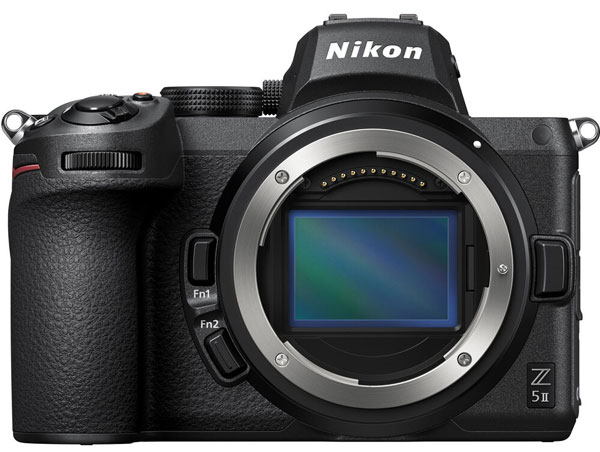
Twitter account How to Fly said the Nikon Z5 II is coming in April, not March 2025. How to Fly, who has hit the mark on multiple pieces of information in the past, has released some information related to Nikon. The Z5II was rumored to be announced in May, but he stated it will be announced in April.
how2fly
The Nikon Z5II will be announced in April (not May).
He has a high success rate when it comes to Tamron-related information, but he has also been correct in his predictions about Nikon-related information. Although it is unclear how he obtained this information, it may be promising.
Nikon Z5 Mark II Price
- The price of the Nikon Z5 Mark II camera is expected to be around $1499 (approximate figure), and that is said to be the announcement price of the camera.
This is the information we have known so far. Now, let’s organize it in a table and list the specifications of the Nikon Z5 Mark II camera.
Nikon Z5 Mark II Specifications
| Feature |
Specification |
| Sensor |
24.5MP Full-Frame BSI CMOS Sensor |
| Processor |
Expeed 7 Image Processor |
| Video Recording |
4K UHD 30p / Full HD 120p, 1.5x 60p with crop |
| Autofocus |
273-Point Hybrid AF with Eye and Animal Detection |
| Image Stabilization |
5-Axis In-Body Image Stabilization |
| Viewfinder |
Bright 3.69M-Dot OLED Electronic Viewfinder |
| Display |
3.2″ Tilting Touchscreen LCD |
| Memory Card Slots |
Dual UHS-II SD Card Slots |
| Connectivity |
Built-In Wi-Fi and Bluetooth Connectivity |
| Charging |
USB-C Charging and Power Delivery Support |
Follow us on our social pages FACEBOOK | TWITTER | INSTAGRAM to get live Camera News + Nikon Rumors 24X7
|
KEEP THIS BLOG ALIVE - Support New Camera Buy Canon Lenses, Buy Music CD or Digital Camera at amazon it helps this site, and you do not pay anything extra, it is just a way to help support this site.

|















